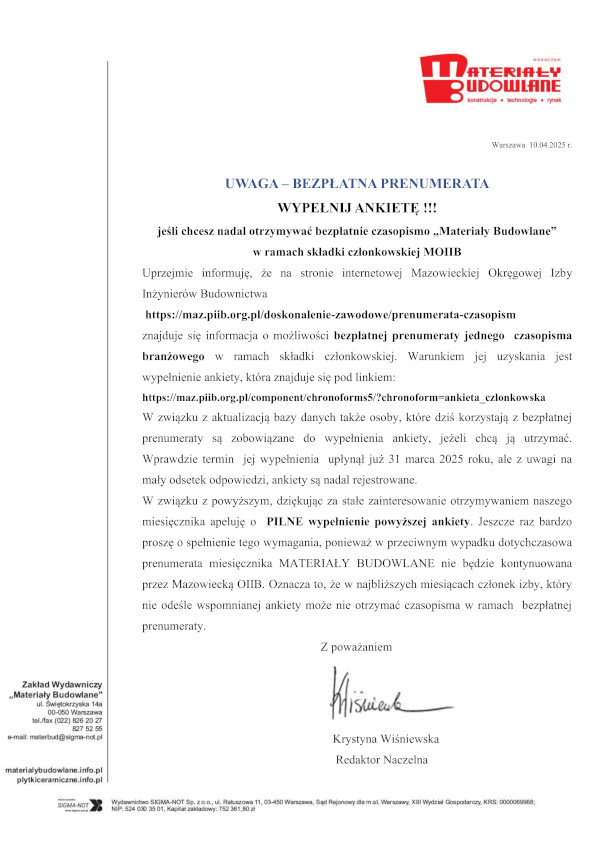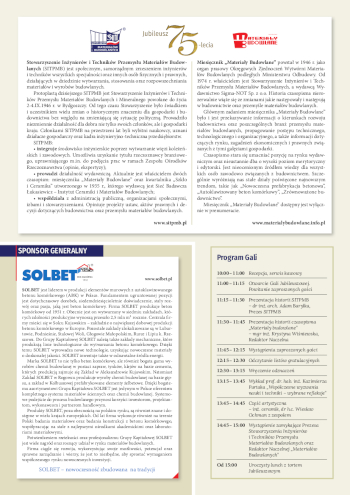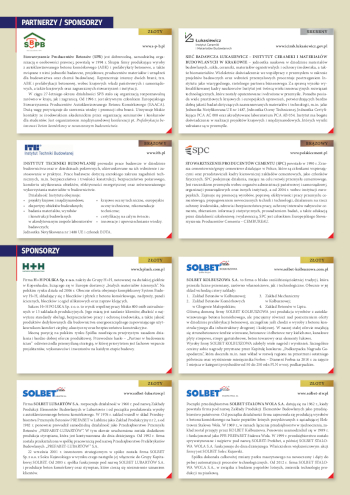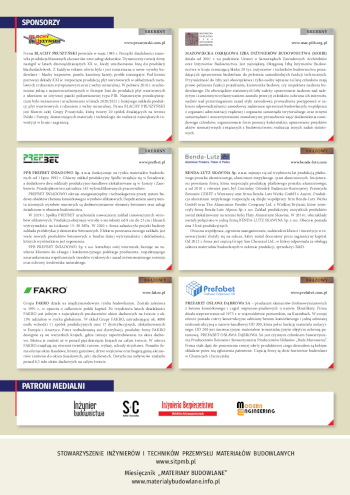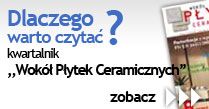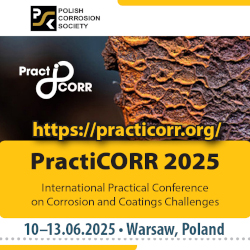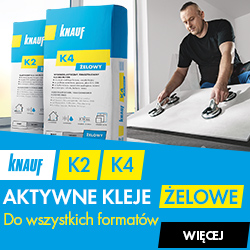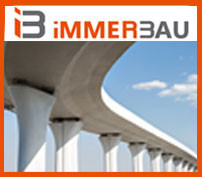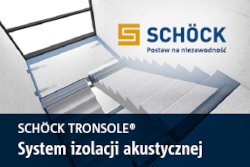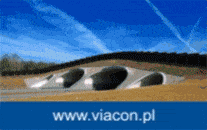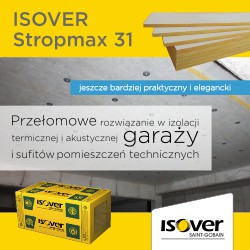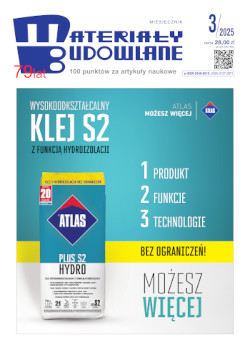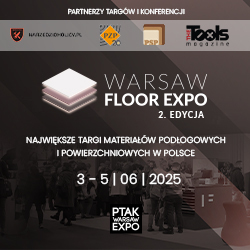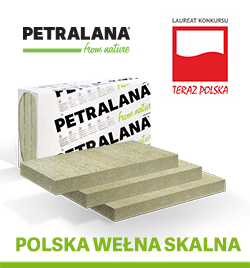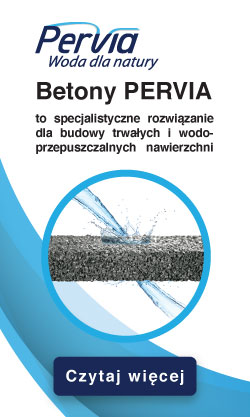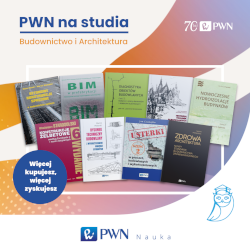Open Access (Artykuł w pliku PDF)
Experimental shear resistance of plate girders with a corrugated web of different wave types
dr inż. Krzysztof Śledziewski, Politechnika Lubelska, Wydział Budownictwa i Architektury
ORCID: 0000-0003-3022-8105
dr inż. Marcin Górecki, Politechnika Lubelska, Wydział Budownictwa i Architektury
ORCID: 0000-0001-8746-8172
Adres do korespondencji: Ten adres pocztowy jest chroniony przed spamowaniem. Aby go zobaczyć, konieczne jest włączenie w przeglądarce obsługi JavaScript.
DOI: 10.15199/33.2023.09.05
Doniesienie naukowe
Streszczenie. W artykule przedstawiono wyniki badań laboratoryjnych wykonanych na belkach ze środnikami z blachy fałdowej o różnym profilu sinusoidalnym poddanych działaniu czteropunktowego zginania. Przeprowadzone badania wykazały, że kształt fali ma znaczny wpływ na nośność na ścinanie belek dwuteowych ze środnikiem sinusoidalnym. Uzyskane wyniki odniesiono również do wyznaczonej nośności normowej, która była na niższym poziomie, niż wynika to z badań doświadczalnych.
Słowa kluczowe: środnik sinusoidalny; nośność na ścinanie; nośność normowa; badania eksperymentalne.
Abstract. This paper presents the results of laboratory tests performed on beams with corrugated plate webs of different sinusoidal profiles subjected to four-point bending.The conducted tests showed that the parameters of the waveform have a significant effect on the shear strength of I-beams with sinusoidal webs. The obtained results were also related to the determined norm load capacities, which were at a lower level than the experimental results.
Keywords: sinusoidal web; shear strength; standard load capacities; experimental studies.
Literatura
[1] ElgaalyM, SeshadriA, Rodriguez R, Ibrahim S. Bridge girders with corrugated webs. Transp. Res. Rec. 2000; DOI: 10.3141/1696-19.
[2] Pasternak H, Kubieniec G. Plate girders with corrugatedwebs. Journal of Civil Engineering and Management. 2010;DOI: 10.3846/jcem.2010.17.
[3] Sayed-Ahmed EY. Plate Girders with Corrugated Steel Webs, Engineering Journal. 2005; t. 42, nr 1: 1 – 13.
[4] Ibrahim BSA. Steel Plate Girders with Corrugated Webs, Past Present and Future. Ain Shams University, 2015.
[5] El Metwally A, Loov RE. Corrugated steel webs for prestressed concrete girders, Materials and Structures/Materiaux et Constructions. 2003; DOI: 10.1617/13820.
[6] Cafolla J. Corrugated webs and Lateral Restraints in Plate Girders for Bridges. 1995; 312.
[7] Prathebha PJHH. Corrugated web steel girders- A state of the art review, International Journal Of Engineering Research And Development. 2018; t. 14, nr 9: 14 – 19.
[8] Wang S, He J, Liu Y. Shear behavior of steel I-girder with stiffened corrugated web, Part I: Experimental study, Thin-Walled Structures. 2018, 2019, DOI: 10.1016/j.tws.2019.02.025.
[9] Eldib MEAH. Shear buckling strength and design of curved corrugated steel webs for bridges. J Constr Steel Res. 2009; DOI: 10.1016/j.jcsr.2009.07.002.
[10] Huang L, Hikosaka H, Komine K. Simulation of accordion effect in corrugated steel web with concrete flanges, Comput Struct. 2004, DOI: 10.1016/j.compstruc.2003.07.010.
[11] Elgaaly M, Seshadri A, Rodriquez R, Ibrahim S. Bridge Girders with Corrugated Webs, Transportation Research Record: Journal of the Transportation Research Board. 2000; DOI: 10.3141/1696-19.
[12] Yi J, Gil H, Youm K, Lee H. Interactive shear buckling behavior of trapezoidally corrugated steel webs, Eng Struct. 2008; DOI: 10.1016/j.engstruct.2007.11.009.
[13] Górecki M, Pieńko M, Łagoda G. Numerical analysis of beamwith sinusoidally corrugatedwebs, AIP Conf Proc. 2018; DOI: 10.1063/1.5019162.
[14] Górecki M, Śledziewski K. Experimental Investigation of Impact Concrete Slab on the Bending Behavior of Composite Bridge Girders with Sinusoidal Steel Web, Materials. 2020; DOI: 10.3390/ma13020273.
[15] Śledziewski K, Górecki M. Finite Element Analysis of the Stability of a Sinusoidal Web in Steel and Composite. Materials. 2020; t. 13, nr 5: 1041.
[16] ElgaalyM,SeshadriA,HamiltonRW.Bending Strength of Steel Beams with Corrugated Webs, Journal of Structural Engineering. 1997; DOI: 10.1061/(ASCE)0733-9445(1997)123:6(772).
[17] He J, Wang S, Liu Y, Wang D, Xin H. Shear behavior of steel I-girder with stiffened corrugated web, Part II: Numerical study, Thin-Walled Structures, t. 147, nr February 2019, s. 106025, 2020, DOI: 10.1016/j. tws.2019.02.023.
[18] Leblouba M, Junaid MT, Barakat S, Altoubat S, Maalej M. Shear buckling and stress distribution in trapezoidal web corrugated steel beams, Thin-Walled Structures, t. 113, nr December 2016, s. 13–26, 2017, DOI: 10.1016/j.tws. 2017.01.002.
[19] Driver RG, Abbas HH, Sause R. Shear Behavior of Corrugated Web Bridge Girders. Journal of Structural Engineering. 2006, DOI: 10.1061/(ASCE)0733-9445.
[20] Moon J, Yi J, Choi BH, Lee HE. Shear strength and design of trapezoidally corrugated steel webs, J Constr Steel Res. 2009; DOI: 10.1016/j. jcsr. 2008.07.018.
[21] HassaneinMF, ElkawasAA, El HadidyAM, Elchalakani M. Shear analysis and design of high-strength steel corrugated web girders for bridge design, Eng Struct. 2017, DOI: 10.1016/j.engstruct.2017.05.035.
[22] Riahi F, BehraveshA, FardMY,Armaghani A. Shear Buckling Analysis of Steel Flat and Corrugated Web I-girders, KSCE Journal of Civil Engineering. 2018, DOI: 10.1007/s12205- -017-1530-9.
[23] Sayed-Ahmed EY. Plate girders with corrugated steel webs, Engineering Journal. 2005, DOI: 10.3846/jcem.2010.17.
[24] Kövesdi B, Jáger B, Dunai L. Bending and shear interaction behavior of girders with trapezoidally corrugated webs, J Constr Steel Res. 2016, DOI: 10.1016/j. jcsr. 2016.03.002.
[25] Jáger B, Dunai L, Kövesdi B. Experimental investigation of the M-V-F interaction behavior of girders with trapezoidally corrugated web, Eng Struct. 2017, DOI: 10.1016/j.engstruct. 2016.12.030.
[26] DASt-Richtlinie 015, 1990, Träger mit Schlanken Stegen.
[27] PN-EN 1993-1-05:2008, Projektowanie konstrukcji stalowych. Część 1-5: Blachownice.
[28] Górecki M, Śledziewski K. Influence of corrugated web geometry on mechanical properties of i-beam: Laboratory tests. Materials. 2022, DOI: 10.3390/ma15010277.
[29] PN-EN 1993-1-1:2006 Projektowanie konstrukcji stalowych. Część 1-1: Reguły ogólne i reguły dla budynków.
[30] Basiński W. Nośność dźwigarów o falistym środniku wzmocnionych żebrami podporowymi i przekątnymi. Gliwice, Wydawnictwo Politechniki Śląskiej, 2020.
Przyjęto do druku: 24.07.2023 r.
Materiały Budowlane 09/2023, strona 20-23 (spis treści >>)
Open Access (Artykuł w pliku PDF)
Durability of hemp-lime composites in the light of various research methods
dr inż. arch. Michał Gołębiewski, Politechnika Warszawska, Wydział Architektury
ORCID: 0000-0001-7206-0369
dr inż. Piotr Narloch, Politechnika Warszawska, Wydział Inżynierii Lądowej
ORCID: 0000-0002-5112-4498
mgr inż. Wojciech Piątkiewicz, Politechnika Warszawska, Wydział Inżynierii Lądowej
ORCID: 0000-0001-6986-8041
inż. Igor Wasilewski, Politechnika Warszawska, Wydział Inżynierii Lądowej
Adres do korespondencji: Ten adres pocztowy jest chroniony przed spamowaniem. Aby go zobaczyć, konieczne jest włączenie w przeglądarce obsługi JavaScript.
DOI: 10.15199/33.2023.09.04
Artykuł przeglądowy
Streszczenie. Kompozyt wapienno-konopny (hempcrete) stosowany jest w budownictwie od ponad 30 lat. Głównymi jego zaletami są właściwości cieplno-wilgotnościowe oraz niewielki wpływ na środowisko. Artykuł przedstawia literaturowy przegląd metod badawczych i wyników badań w celu opisania trwałości kompozytu. Materiał wykazuje odporność na zmienne warunki wilgotnościowe oraz korozję biologiczną i chemiczną, ale w kontakcie z wodą traci wytrzymałość mechaniczną. Przegląd literatury wskazuje na złożoność problematyki oraz liczne ograniczenia techniczne i metodologiczne skutkujące brakiem jednoznacznych wniosków.
Słowa kluczowe: kompozyt wapienno-konopny; trwałość; zrównoważone budownictwo.
Abstract. Hemp-lime composite (hempcrete) has been used in construction for over 30 years. The main advantages of the material are thermal and hygric properties and low environmental impact. The article presents a literature review of research methods and experimental results in order to describe the durability of the composite. The material is resistant to changing humidity conditions as well as biological and chemical corrosion, and at the same time loses itsmechanical strength in contact with water. The literature review indicates the complexity of the issues and numerous technical andmethodological limitations resulting in the lack of clear conclusions.
Keywords: hemp-lime composite; durability; sustainable construction.
Literatura
[1] International Energy Agency and the United Nations Environment Programme Global Status Report: Towards a Zero‐emission, Efficient and Resilient Buildings and Construction Sector. 2018.
[2] Amziane S. Overview on Biobased Building Material Made with Plant Aggregate. RILEM Technical Letters. 2016; DOI: 10.21809/rilemtechlett.v1.9.
[3] CierpuchaW. (red.)Technologia uprawy i przetwórstwa konopi włóknistej. Poznań: IWNiRZ; 2013.
[4] Khan BA, Wang J, Warner P, Wang H. Antibacterial Properties of Hemp Hurd Powder against E. Coli. Journal ofApplied Polymer Science. 2015; DOI:10.1002/app.41588.
[5] GołębiewskiM. Kompozyty konopno-wapienne (Hempcrete). Materiały Budowlane. 2016; DOI: 10.15199/33.2016.07.29.
[6] Barbhuiya S, Bhusan Das B. A Comprehensive Review on the Use of Hemp in Concrete. Construction and Building Materials. 2022; DOI: 10.1016/j.conbuildmat.2022.127857.
[7] GołębiewskiM,AdamczewskiG.Wytrzymałość na ściskanie kompozytówkonopno-wapiennychwytworzonych metodą ubijania. Materiały Budowlane. 2018; DOI: 10.15199/33.2018.09.24.
[8] PiątkiewiczW,Narloch P, PietruszkaB. Influence of Hemp-Lime Composite Composition on its Mechanical and Physical Properties.Archives ofCivil Engineering. 2020;DOI: 10.24425/ace.2020.134409.
[9] Seng B,Magniont C, Lorente S. Characterization of a Precast Hemp Concrete. Part I: Physical and Thermal Properties. Journal of Building Engineering. 2018; DOI: 10.1016/j.jobe.2018.07.016.
[10] Gołębiewski M, Pietruszka B. Współczynnik przewodzenia ciepła kompozytów konopno-wapiennych wytworzonych metodą ubijania. Materiały Budiwlane. 2019; DOI: 10.15199/33.2019.08.09.
[11] Walker R, Pavía S. Moisture Transfer and Thermal Properties of Hemp – Lime Concretes. Construction and Building Materials. 2014; DOI:10.1016/j.conbuildmat.2014.04.081.
[12] Collet F, Pretot S.ThermalConductivity ofHemp Concretes: Variation with Formulation, Density and Water Content. Construction and Building Materials. 2014; doi: 10.1016/j.conbuildmat.2014.05.039.
[13] Arehart JH,NelsonWS, SrubarWV.On the TheoreticalCarbon Storage andCarbon Sequestration Potential of Hempcrete. Journal of Cleaner Production. 2020; DOI: 10.1016/j.jclepro. 2020.121846.
[14] Allin S. Building with Hemp. 2nd ed. Seed Press; 2012.
[15] Stanwix W, Sparrow A. The Hempcrete Book: Designing and Building with Hemp-Lime.Green Books; 2014.
[16] GołębiewskiM.Aspekty zastosowania kompozytów wapienno-konopnych w budownictwie indywidualnych domów mieszkalnych w architekturze proekologicznej. Praca doktorska. PolitechnikaWarszawska; 2020.
[17] Delannoy G, Marceau S, Glé P, Gourlay E, Guéguen-Minerbe M, Diafi D, Nour I, Amziane S, Farcas F. Aging of Hemp Shiv Used for Concrete. Materials & Design. 2018; DOI: 10.1016/j.matdes. 2018.10.016.
[18] Brzyski P. Kompozyt wapienno-konopny jako materiał ścienny spełniający zasady zrównoważonego rozwoju w budownictwie. Praca doktorska. Politechnika Lubelska; 2018.
[19] Collet F, Chamoin J, Pretot S, Lanos C. Comparison of theHygric Behaviour of ThreeHemp Concretes. Energy and Buildings. 2013; DOI: 10.1016/j.enbuild.2013.03.010.
[20] ZerroukiR,BenazzoukA,CourtyM,BenHamed H. Potential Use of Matakaolin as a Partial Replacement of Preformulated Lime Binder to Improve Durability ofHempConcrete underCyclicWetting/DryingAging. Construction andBuildingMaterials. 2022; DOI: 10.1016/j.conbuildmat. 2022.127389.
[21 [ Benmahiddine F, Bennai F, Cherif R, Belarbi R, Tahakourt A, Abahri K. Experimental Investigation on the Influence of Immersion/Drying Cycles on the Hygrothermal and Mechanical Properties of Hemp Concrete. Journal of Building Engineering. 2020; DOI: 10.1016/j.jobe.2020.101758.
[22] Sheridan J, SonebiM, Taylor S,Amziane S. The Effect of Long TermWeathering on Hemp and Rapeseed Concrete. Cement and Concrete Research. 2020; DOI: 10.1016/j.cemconres.2020.106014.
[23] Marceau S, Glé P, Guéguen-Minerbe M, Gourlay E, Moscardelli S, Nour I, Amziane S. Influence ofAcceleratedAging on the Properties ofHemp Concretes. Construction and Building Materials. 2017; DOI: 10.1016/j.conbuildmat.2016.11.129.
[24]DelannoyG,Marceau S,Glé P,GourlayE,Guéguen- MinerbeM,AmzianeS,FarcasF.DurabilityofHemp ConcretesExposedtoAcceleratedEnvironmentalAging. Construction and Building Materials. 2020; DOI: 10.1016/j.conbuildmat.2020.119043.
[25] Arizzi A, Viles H, Martín-Sanchez I, Cultrone G. Predicting the Long-TermDurability ofHemp-Lime Renders in Inland and Coastal Areas Using Mediterranean, Tropical and Semi-Arid Climatic Simulations. Science of the Total Environment. 2016; DOI: 10.1016/j.scitotenv.2015.10.141.
[26]Walker R, Pavia S,Mitchell R.Mechanical Properties and Durability of Hemp-Lime Concretes. Construction and Building Materials. 2014; DOI: 10.1016/j.conbuildmat.2014.02.065.
[27] DeBruijn PB, JeppssonKH, SandinK,NilssonC. Mechanical Properties ofLime-HempConcreteContaining Shives and Fibres. BiosystemEngineering. 2009; DOI: 10.1016/j.biosystemseng.2009.02.005.
[28] SassoniE,ManziS,MotoriA,MontecchiM,CantiM. Experimental Study on the Physical-Mechanical Durability of Innovative Hemp-Based Composites for the Building Industry. Energy and Buildings. 2015; DOI: 10.1016/j.enbuild.2015.07.022.
[29] Horszczaruk E, Strzałkowski J, Głowacka A, Paszkiewicz O, Markowska-Szczupak. A. Investigation of Durability Properties for Lightweight Structural ConcretewithHemp Shives Instead ofAggregate. Applied Sciences. 2023;DOI: 10.3390/app13148447.
[30] Sabir B,Wild S, Bai J.Metakaolin and Calcined Clays as Pozzolans for Concrete:AReview. Cement and Concrete Composites. 2001; DOI: 10.1016/S0958-9465(00)00092-5.
[31] Sheridan J, SonebiM, Taylor S,Amziane S. The Effect of a Polyacrylic Acid Viscosity Modifying Agent on the Mechanical, Thermal and Transport Properties of Hemp and Rapeseed Straw Concrete. Construction and Building Materials. 2020; DOI: 10.1016/j.conbuildmat.2019.117536.
[32] Mohr BJ, Nanko H, Kurtis KE. Durability of Kraft Pulp Fiber-Cement Composites to Wet/Dry Cycling. Cement and Concrete Composites. 2005; DOI: 10.1016/j.cemconcomp.2004.07.006.
[33] Wei J, Meyer C. Degradation Mechanisms of Natural Fiber in the Matrix of Cement Composites. Cement and Concrete Research. 2015; DOI: 10.1016/j.cemconres.2015.02.019.
[34] Botas SMS, Rato VM, Faria P. Testing the Freeze/Thaw Cycles in Lime Mortar. RILEM Proceedings Pro 078: HMC2010, 2nd Historic Mortars Conference and RILEMTC 203-RHMFinal Workshop. 2010; 417 – 425.
[35] SassoniE,ManziS,MotoriA,MontecchiM,CantiM. Novel Sustainable Hemp-Based Composites for Application in the Building Industry: Physical, Thermal andMechanicalCharacterization.Energy andBuildings. 2014; DOI:10.1016/j.enbuild. 2014.03.033.
[36] ShirakawaMA,TavaresRG,GaylardeCC,Taqueda MES, Loh K, JohnVM. Climate as theMost Important FactorDeterminingAnti-FungalBiocidePerformance in Paint Films. Science of the Total Environment. 2010; DOI: 10.1016/j.scitotenv.2010.07.084.
[37] Hirst E. Characterisation of Hemp-Lime as a Composite BuildingMaterial. PhDthesis.University of Bath; 2013.
[38] Arnaud L, Gourlay E. Experimental Study of Parameters Influencing Mechanical Properties of Hemp Concretes. Construction and BuildingMaterials. 2012; DOI: 10.1016/j.conbuildmat.2011.07.052.
[39] Sedan D, Pagnoux C, Chotard T, Smith A, Lejolly D, Gloaguen V, Krausz P. Effect of Calcium Rich and Alkaline Solutions on the Chemical Behaviour of Hemp Fibres. Journal of Materials Science. 2007; DOI: 10.1007/s10853-007-1903-4.
[40]DelannoyG,Marceau S,Glé P,GourlayE,Guéguen- MinerbeM,DiafiD,Amziane S, Farcas F. Impact of Hemp Shiv Extractives on Hydration of Portland Cement. Construction and Building Materials. 2020; DOI: 10.1016/j.conbuildmat. 2020.118300.
[41] Brzyski P,GładeckiM, RumińskaM, PietrakK, Kubiś M, Łapka P. Influence of Hemp Shives Size on Hygro-Thermal and Mechanical Properties of a Hemp-Lime Composite. Materials. 2020; DOI: 10.3390/ma13235383.
Przyjęto do druku: 10.08.2023 r.
Materiały Budowlane 09/2023, strona 13-19 (spis treści >>)
Open Access (Artykuł w pliku PDF)
Influence of corundum sand on the properties of cement concrete
prof. dr hab. inż. Elżbieta Horszczaruk, Zachodniopomorski Uniwersytet Technologiczny w Szczecinie, Wydział Budownictwa i Inżynierii Środowiska
ORCID: 0000-0003-0840-5048
prof. dr hab. inż. Włodzimierz Kiernożycki, Zachodniopomorski Uniwersytet Technologiczny w Szczecinie, Wydział Budownictwa i Inżynierii Środowiska
ORCID: 0000-0002-7577-6319
Adres do korespondencji: Ten adres pocztowy jest chroniony przed spamowaniem. Aby go zobaczyć, konieczne jest włączenie w przeglądarce obsługi JavaScript.
DOI: 10.15199/33.2023.09.03
Oryginalny artykuł naukowy
Streszczenie. W artykule przedstawiono wyniki badań wpływu odpadowego piasku korundowego używanego do piaskowania konstrukcji metalowych na właściwości betonu. Piasek korundowy zastosowano jako zamiennik 25, 50 i 75% objętości kruszywa drobnego. Przeprowadzone zostały badania konsystencji mieszanek betonowych i gęstości objętościowej betonów. Badano wytrzymałość na ściskanie i rozciąganie przy rozłupywaniu betonów po 7 i 28 dniach dojrzewania. Określono również nasiąkliwość betonów i głębokość penetracji wody pod ciśnieniem. Badania potwierdziły możliwość zastosowania piasku korundowego jako zamiennika kruszywa drobnego w betonach cementowych.
Słowa kluczowe: beton cementowy; piasek korundowy; zamiennik kruszywa drobnego; tlenek glinu; właściwości mechaniczne.
Abstract. The paper presents the results of research on the influence of waste corundum sand used for sandblasting metal structures on the properties concrete. Corundum sand was used as a substitute for sand in the amount of 25%, 50 and 75% of the fine aggregate volume.Testswere carried out on the consistency of concretemixes and the bulk density of concretes. The compressive strength and tensile splitting strength were measured at the age of the concrete of 7 and 28 days. The water absorption of concretes and the depth of water penetration under pressure were also determined. The tests confirmed the possibility of using corundum sand as a substitute for fine aggregate in cement concrete.
Keywords: cement concrete; corundum sand; substitute for fine aggregate; aluminum oxide; mechanical properties.
Literatura
[1] Singh N, Bhardwaj A. Reviewing the role of coal bottom ash as an alternative of cement. Construct Build Mater. 2020; 233: 117276.
[2] Sun J, Shen X, Tan G, Tanner JE. Compressive strength and hydration characteristics of high-volume fly ash concrete prepared from fly ash. J Therm Anal Calorim. 2019; 136 (2): 565e80.
[3] Ganesh P, MurthyAR. Tensile behaviour and durability aspects of sustainable ultra-high performance concrete incorporated with GGBS as cementitious material. Construct Build Mater. 2019; 197: 667e80.
[4] Qureshi LA, Ali B, Ali A. Combined effects of supplementary cementitious materials (silica fume, GGBS, fly ash and rice husk ash) and steel fiber on the hardened properties of recycled aggregate concrete. Construct Build Mater. 2020; 263: 120636.
[5] Etxeberria M, Vázquez E, Marí A, Barra M. Infuence of amount of recycled coarse aggregates and production process on properties of recycled aggregate concrete. CemConcr Res. 2007; 37: 735 – 742.
[6] Chung SY,Abd ElrahmanM, Sikora P, Rucińska T, Horszczaruk E, Stephan D. Evaluation of the Effects of Crushed and ExpandedWaste Glass Aggregates on the Material Properties of Lightweight Concrete Using Image-Based Approaches. Materials. 2017; DOI: 10.3390/ma- 10121354.
[7] Ołdakowska E. Ocena wybranych właściwości betonów zwykłych z rozdrobnioną gumą ze zużytych opon samochodowych. Ecological Engineering. 2015; DOI: 10.12912/23920629/58902.
[8] Akcaozoglu S, Atis CD, Akcaozoglu K. An investigation on the use of shredded waste PET bottles as aggregate in lightweight concrete.WasteManage. 2010; DOI: 10.1016/j.wasman.2009.09.033.
[9] Medina NF, Medina DF, Hernandez-Olivares F, NavacerradaMA.Mechanical and thermal properties of concrete incorporating rubber and fibres from thyre recycling. Constr Build Mater. 2017; DOI: 10.1016/j.conbuildmat.2017.03.196.
[10] Zain MFM, Islam MN, Radin SS, Yap SG. Cement-based solidification for the safe disposal of blasted copper slag, Cem. Concr. Compos. 2004; 26: 845 – 851
[11] Aurich JC, Linke B,HauschildM, CarrellaM, Kirsch B. Sustainability of abrasive processes, CIRPAnn. Manuf. Technol. 2013; 62: 653 – 672.
[12] Borucka-Lipska J, Techman M, Skibicki S. Use of contaminated sand blasting grit for production of cement mortars. IOP Conf. Ser.Mater. Sci. Eng. 2019; https://doi.org/10.1088/1757- 899X/471/3/032055art.no.032055.
[13] Sua-iam G, Makul N. Rheological and mechanical properties of cement-fly ash self-consolidating concrete incorporating high volumes of alumina-based material as fine aggregate. Constr. Build. Mater. 2015; 95: 736 – 747.
[14] Pranav S, Lahoti M, Shan X, En-Hua Yang E-H, Muthukumar G. Economic input-output LCA of precast corundum-blended ECC overlay pavement. Resources, Conservation, and Recycling. 2022; 184: 106385.
[15] Sua-iam G, Makul N. Use of recycled alumina as fine aggregate replacement in self-compacting concrete. Constr. Build.Mater. 2013; 47: 701 – 710.
[16] Dal Poggetto G, Kittisayarm P, Pintasiri S, Chiyasak P, Leonelli C. Chaysuwan, D. Chemical andMechanical Properties ofMetakaolin-Based Geopolymers withWaste Corundum Powder Resulting from Erosion Testing. Polymers. 2022; 14: 5091.
[17] Dal Poggetto G, D’Angelo A, Catauro M, Barbieri L, Leonelli C. Recycling of Waste CorundumAbrasive Powder inMk-Based Geopolymers. Polymers. 2022, 14, 2173.
Przyjęto do druku: 17.08.2023 r.
Materiały Budowlane 09/2023, strona 9-12 (spis treści >>)
Open Access (Artykuł w pliku PDF)
Properties of FRC determined in standard tests – compressive strength and three – point bending test
prof. dr hab. inż. Łukasz Drobiec, Politechnika Śląska, Wydział Budownictwa
ORCID: 0000-0001-9825-6343
mgr inż. Julia Blazy, Politechnika Śląska, Wydział Budownictwa
ORCID: 0000-0001-9525-8650
Adres do korespondencji: Ten adres pocztowy jest chroniony przed spamowaniem. Aby go zobaczyć, konieczne jest włączenie w przeglądarce obsługi JavaScript.
DOI: 10.15199/33.2023.09.02
Oryginalny artykuł naukowy
Streszczenie. Celem artykułu jest przedstawienie wyników badań próbek wykonanych z trzech mieszanek betonowych z dodatkiem włókien polimerowych. Stwierdzono, że na maksymalną wytrzymałość na ściskanie i rozciąganie przy zginaniu nie miał wpływu rodzaj i ilość włókien. Ich wpływ był widoczny po zarysowaniu się belek w teście trzypunktowego zginania. Określono i porównano resztkowe oraz równoważne wytrzymałości na rozciąganie przy zginaniu. Ponadto opisano zależności pomiędzy ugięciem oraz rozwarciem początku i końca nacięcia w zginanych belkach.
Słowa kluczowe: fibrobeton; włókna polimerowe; wytrzymałość na ściskanie; wytrzymałość równoważna; wytrzymałość resztkowa.
Abstract. The aim of the article was to present the results of testing three speciments made of polymer fiber reinforced concretes (FRC). Itwas found that themaximumcompressive and flexural tensile strength was not affected by the type and amount of fibres. Their influence was visible after the cracking of the beams in the three – point bending test. Residual and equivalent flexural tensile strengths were calculated and compared. Finally, the dependencies between beam’s deflection and crack mouth and tip opening displacement in the flexural tests were described.
Keywords: fiber reinforced concrete (FRC); polymer fibres; compressive strength; residual strength; equivalent strength.
Literatura
[1] PN-EN 14651+A1:2007 Metoda badania betonu zbrojonego włóknem stalowym – Pomiary wytrzymałości na rozciąganie przy zginaniu (granica proporcjonalności LOP).
[2] RILEM TC 162-TDF Test and design methods for steel fibre reinforced concrete, final recommendations. Materials and Structures. 2002; t. 35, nr 9: 579 – 582.
[3] Chandak MA, Pawade PY. Influence of Metakaolin in Concrete Mixture: A Review. The International Journal of Engineering and Science. 2018; ss. 37 – 41.
[4] Sabir BB,Wild S, Bai J.Metakaolin and calcined clays as pozzolans for concrete: a review. Cement & Concrete Composites. 2001; 23: 441 – 454.
[5] ASTRA Technologia Betonu Astra MK-40. Karta danych technicznych. https://astra-polska. com/wp-content/uploads/2020/11/karta-teczhniczna- MK40-1-2.pdf (udostępniono sie. 14, 2023).
[6] PN-EN 12390-1:2021-12 Badania betonu – Część 1: Kształt, wymiary i inne wymagania dotyczące próbek i form.
[7] PN-EN 12390-2:2019-07 Badania betonu – Część 2: Wykonywanie i pielęgnacja próbek do badań wytrzymałościowych.
[8] Kadri EH, Kenai S, Ezziane K, Siddique R, De Schutter G. Influence of metakaolin and silica fume on the heat of hydration and compressive strength development of mortar.Applied Clay Science. 2011,DOI: 10.1016/j.clay. 2011.06.008.
[9] PN-EN 206+A2: 2021-08 Beton – Wymagania, właściwości użytkowe, produkcja i zgodność.
[10] Blazy J, Drobiec Ł,Wolka P. Flexural tensile strength of concrete with synthetic fibers. Materials. 2021; DOI: 10.3390/ma14164428.
Przyjęto do druku: 20.09.2023 r.
Materiały Budowlane 09/2023, strona 5-8 (spis treści >>)
Open Access (Artykuł w pliku PDF)
Investigation on the tensile strength of concrete with microfibres
prof. dr hab. inż. Tadeusz Urban, Politechnika Łódzka, Wydział Budownictwa, Architektury i Inżynierii Środowiska
ORCID: 0000-0001-7494-3747
dr inż. Michał Gołdyn, Politechnika Łódzka, Wydział Budownictwa, Architektury i Inżynierii Środowiska
ORCID: 0000-0002-7791-1940
dr inż. Łukasz Krawczyk, Politechnika Łódzka, Wydział Budownictwa, Architektury i Inżynierii Środowiska
ORCID: 0000-0002-0406-7750
Adres do korespondencji: Ten adres pocztowy jest chroniony przed spamowaniem. Aby go zobaczyć, konieczne jest włączenie w przeglądarce obsługi JavaScript.
DOI: 10.15199/33.2023.09.01
Doniesienie naukowe
Streszczenie. Celem pracy było określenie zależności pomiędzy wytrzymałością na rozciąganie betonu wysokowartościowego z mikrozbrojeniem, zbadaną w różny sposób: przez rozciąganie bezpośrednie, rozłupywanie i zginanie. W przypadku bezpośredniego rozciągania wykorzystano próbki o niepryzmatycznym kształcie oraz zaprojektowane akcesorium do maszyny wytrzymałościowej. Stwierdzono, że wytrzymałość w przypadku rozciągania bezpośredniego stanowi 0,23 ÷ 0,31 wytrzymałości na rozłupywanie i 0,21 ÷ 0,30 wytrzymałości na zginanie.
Słowa kluczowe: wytrzymałość na rozciąganie; rozłupywanie; fibrobeton; beton wysokowartościowy.
Abstract. The aimof the investigations was to determine relation between the tensile strength of the high performance concrete with microfibres, tested in various ways: by direct tension, splitting and bending. Direct tension was realized using the non-prismatic specimens and the designed accessory for the testing machine. It was found that strength by direct tension is 0.23 ÷ 0.31 of the splitting strength and 0.21 ÷ 0.30 of the flexural strength.
Keywords: tensile strength; splitting; fiber reinforced concrete; ultra-high performance concrete.
Literatura
[1] PN-EN 12390-6:2011, 2011, Badania betonu – Część 6: Wytrzymałość na rozciąganie przy rozłupywaniu próbek do badań.
[2] ACI 318-19, 2019, Building Code Requirements for Structural Concrete (ACI 318- 19) and Commentary (ACI 318R-19).
[3] Kim JJ, Taha MR. Experimental and Numerical Evaluation of Direct Tension Test for Cylindrical Concrete Specimens,Adv in Civ Eng. 2014, https://doi.org/10.1155/2014/156926.
[4] PN-EN 1992-1-1:2008, 2008, Eurokod 2 – Projektowanie konstrukcji z betonu – Część 1-1: Reguły ogólne i reguły dla budynków.
[5] Seruga A, Kaźmierczak S, Kanciruk A. Wytrzymałość na rozciąganie osiowe betonu napowietrzonego, Dni Betonu 2008.
[6] Resan SF, Chassib SM, Zemam SK, Madhi MJ. New approach of concrete tensile strength test, Case Stud. Constr. Mater. 2020, https://doi.org/10.1016/j.cscm.2020.e00347.
[7] Park SH, Kim DJ, Ryu GS, Koh KT. Tensile behavior of Ultra High Performance Hybrid Fiber Reinforced Concrete Cement & Concrete Composites. 2012; 172 – 184.
[8]YooDY,KimS,KimJJ,ChunB.An experimental study on pullout and tensile behavior of ultra-high performance concrete reinforcedwith various steel fibers. Construction and BuildingMaterials. 2019; 46 – 61.
[9] Markovic I. High-performance hybrid-fibre concrete: Development and utilisation, doktorat Delft University. 2006.
[10] Huang H, Gao X, Li L, HuiWang. Improvement effect of steel fiber orientation control on mechanical performance of UHPC. Construction and Building Materials. 2018; 709 – 721.
[11] PN-EN 14651:2005+A1:2007 Metoda badania betonu zbrojonego włóknem stalowym – Pomiary wytrzymałości na rozciąganie przy zginaniu (granica proporcjonalności LOP).
[12] fib Model Code 2010, 2012, Model Code 2010. Final draft.
Przyjęto do druku: 24.08.2023 r.
Materiały Budowlane 09/2023, strona 1-4 (spis treści >>)
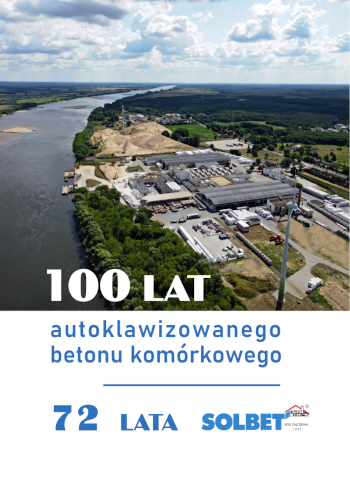
Wejdź na stronę
www.solbet.pl
Materiały Budowlane 09/2023, Okładka IV (spis treści >>)
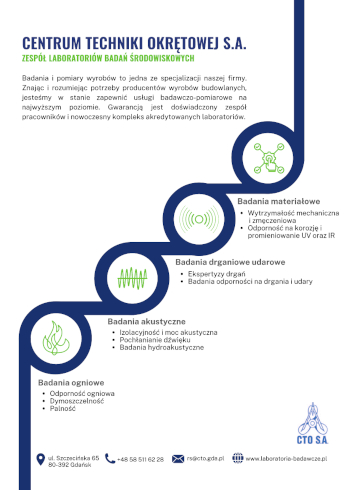
Wejdź na stronę
laboratoria-badawcze.pl
Materiały Budowlane 09/2023, Okładka III (spis treści >>)
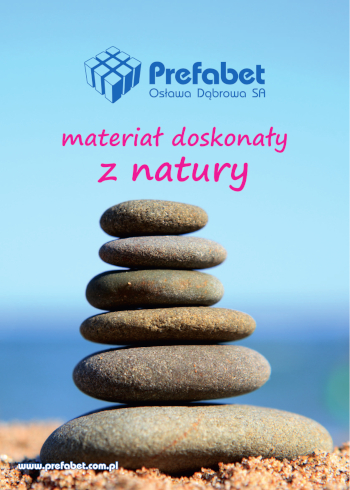
Wejdź na stronę
prefabet.com.pl
Materiały Budowlane 09/2023, Okładka II (spis treści >>)


